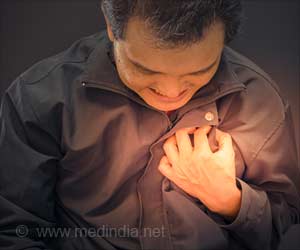Scientists at the Keck School of Medicine of the University of Southern California (USC) have identified a key cellular mechanism that guides embryonic heart tissue formation. If this process is disrupted, it can lead to a number of common congenital heart defects.
Heart tissue forms in two distinct phases known as the First Heart Field, which includes the left ventricle and portions of both atrial chambers, and the Second Heart Field (SHF), which consists of the right ventricle and outflow tract. In humans, the process occurs within the fourth week of development. Using animal models, Keck School ofedicine researchers found that retinoic acid (RA), a derivative of vitamin A, regulates the SHF tissue formation and the septation, or division, of the outflow tract into the ascending aorta and the pulmonary artery.
The study appears in the March 16 issue of the journal Developmental Cell.
"This study provides us with a much deeper understanding of the biology of second heart field development," said principal investigator Henry Sucov, Ph.D., associate professor of Cell and Neurobiology at the Keck School of Medicine and a researcher at the Eli and Edythe Broad Center for Regenerative Medicine and Stem Cell Research at USC. "We now know that vitamin A is a critical regulator of this process, and too much or too little RA can lead to common congenital defects."
RA is a signaling molecule that causes progenitor cells (cells that have the capacity to differentiate into many different kinds of cells) to take the first step towards differentiating into heart tissue. Using specific molecular markers, researchers were able to observe the process by which the cells moved to the outflow tract and began to form essential heart tissue.
The process of moving cells to form the outflow tract is similar to a conveyer belt, Sucov explained. However, in animal models that were mutated to have an RA receptor deficiency, the entire process was halted, resulting in an outflow tract that was shortened and misaligned.
Advertisement
"This exciting research shows how retinoic acid, a vitamin A derivative, acts to guide cells in the embryo to form parts of the heart and the major blood vessels that emerge from it," said Martin Pera, Ph.D., director of the Eli and Edythe Broad Center for Regenerative Medicine and Stem Cell Research at USC. "Defects in this developmental pathway can result in serious congenital malformations of the heart in the fetus and newborns, that may be fatal if not corrected surgically."
Advertisement
RAS













